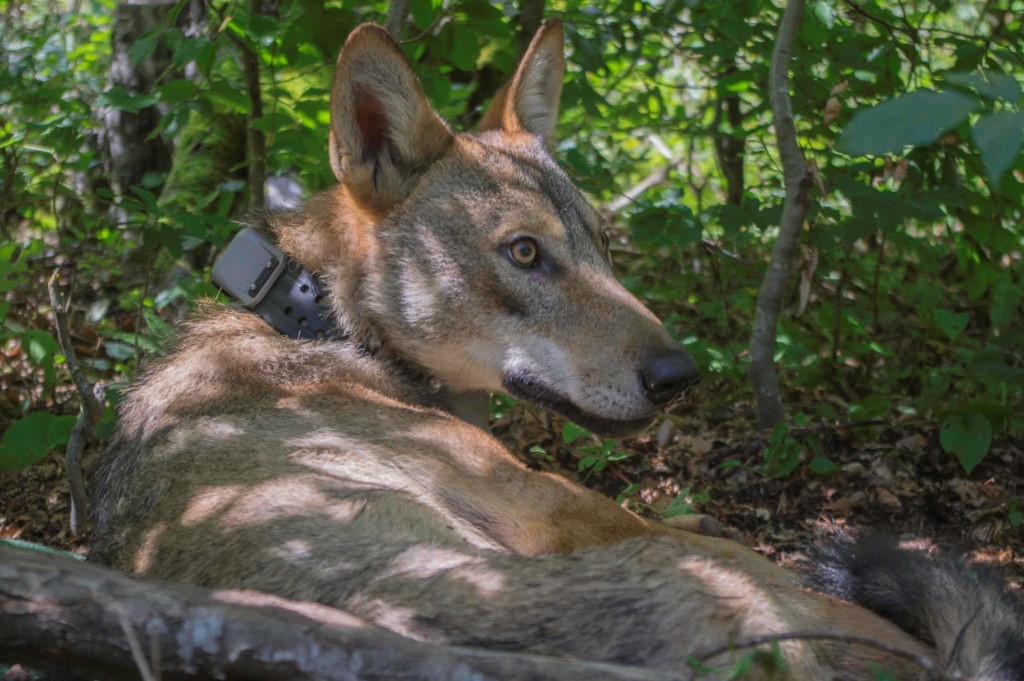VEHICLE COLLISIONS – WHY ARE THERE SO MANY WOLVES ON THE ROADS?
Wolves in Europe do not live to an old age, partly due to collisions with vehicles
The mortality rate of young wolves in Europe is quite high and few wolves reach a higher age. The reasons for the mortality of wolves are largely determined by examining the carcasses found. For these, collision with a vehicle is a common cause of death, as shown by some studies analysing data over a longer period (more than 10 years).
Data from the Croatian survey show that the largest proportion of wolves examined were shot (65.2%), with the second most common cause of death being collision with a vehicle (19.6%). The average age of the wolves examined was 1.9 years.***
In the central-eastern part of Italy, collision with a vehicle was the most common cause of death, followed by illegal killing, killing by other wolves and diseases were the other causes. The authors also point out that wolves killed by vehicle collisions are more likely to be found, as they lie along thoroughfares where they are quite visible. The deaths caused by hit-and-runs have been concentrated in wolves under two years of age. The proportion of wolves killed by vehicle collisions was lower for older wolves. The average age of the wolves examined was 3.1 years (for males) and 3.4 years (for females). ****
Data from central Italy show that 49% of the wolves died as a result of a collision with a vehicle, 35.4% died as a result of illegal killing, 9.9% died of natural causes and 5.7% of the wolves could not be identified as to the cause of death.*****

Stories of wolves fitted with telemetry collars in recent years
Within the LIFE WOLFALPS EU and Carnivora Dinarica projects, several wolf specimens have been fitted with telemetry collars at the Biotechnical faculty over the last three years. The following stories are in line with the scientific observation that few young wolves survive to the time of establishment of their territory. Nevertheless, it must be stressed that telemetry gives us the stories of the lives of individuals, but only a range of different population monitoring methods can give us the bigger picture.
- On 3 September 2019, we fitted a telemetry collar to a young male wolf (Jože) in the Snežnik area. He wore it for 44 days until he was illegally killed.
- In Notranjska, the telemetry collar was worn by a year old female (from the previous year), from 22 May 2020 to 23 September of the same year (125 days). On that day she was illegally shot. The female, Vita, had enlarged teats but was not lactating, which indicates that as an older female she was caring for the offspring of the lead pair. She was monitored in the framework of the Carnivora Dinarica project.
- On 2 August of the same year, we collared the 10-year-old lead male wolf (Herman) in the Snežnik area. He wore the collar for only two weeks, after which he took it off.
- In September 2020, we fitted a telemetry collar to Anton, a wolf in the Snežnik area, near the Slovenian-Croatian border. We monitored him until 27 January 2021, when he was run over by a car after crossing the motorway several times.
- The young male wolf was captured on 6 November 2020 as part of the LIFE WOLFALPS EU project in the Jelovica area, after which it was named (wolf Jelko). After dispersal, he moved between the Rezia area and Kobariška stol until he died on 16 February in the vicinity of Ospidaletto due to a collision with a vehicle.
- Almost a year later, another pup was caught on 13 October 2021, also in the Jelovica area. We have named him wolf Mojmir. We are not aware that he has ever left the area of his original pack, as we have not received any data from his telemetry collar since 30 November 2021.

Sources
***Huber Đ. in sod., 2002. Causes of wolf mortality in Croatia in the period 1986-2001. VETERINARSKI ARHIV 72 (3), 131-139
****Lovari S. in sod., 2006. Mortality parameters of the wolf in Italy: does the wolf keep himself from the door? Journal of Zoology 272 (2007) 117–124. ISSN 0952-8369
*****Musto C. in sod., 2021. Men and wolves: Anthropogenic causes are an important driver of wolf mortality in human-dominated landscapes in Italy. Global Ecology and Conservation 32 (2021)











